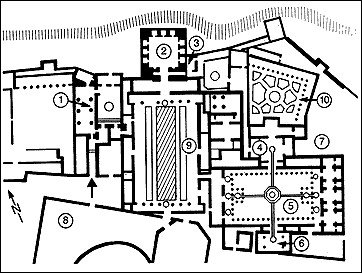 |
|||||||||||||||||
The Alhambra is actually three palaces and they are: the Mexuar, Comares Palace and the Lion's Palace. Each palace is built around a central courtyard with a fountain or pool. Figure 1 1. Mexuar Palace
|
Figure 1 |
Hall of the AmbassadorsThe Hall of the Ambassadors has a massive ceiling and it depicts the seven heavens of Muslim paradise. You are able to see wonderful views from the windows. This was the most important hall in the palace. The hall used for royal audiences and court ceremonies. |
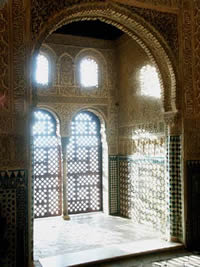 |
BathsThe royal baths show a warm and sensitive use of light, shape and
colour. Singers and musicians would entertain the bathers from the
galleries above.
|
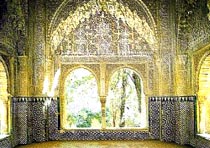 |
The Hall of the Two Sisters The Hall of the Two Sisters’ cupola is sculpted out of stalactites and stucco motifs on the walls. The name of this hall is derived from the two identical white marble slabs in the floor, hence the name “Two sisters”. |
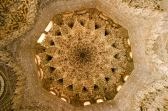 |
The Court of LionsThe Court of the Lions is one of the most famous areas of all the Alhambra. There is a marble fountain with twelve stone lions guarding the fountain. “The delicate arcades supported on slender columns are all around the courtyard.” There is a poem inscribed on the fountain describing how much fiercer the lions would look if they weren't controlled by their respect for the sultan.
|
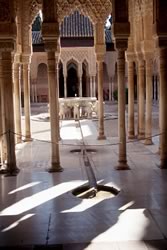 |
The Hall of the Abencerrages The Hall of the Abencerrages is named after a powerful Moorish family. There is a dark stain in the fountain that people claim is blood.
|
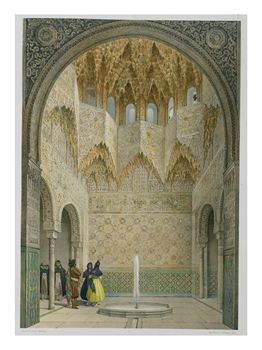 |
The Partal Gardens
|
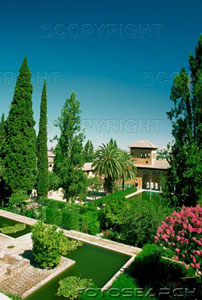 |
The Palace of Charles V Charles V Palace is a part of the palace that has never been fully completed. This building is considered to be one of the most important buildings in renaissance Spain due to the fact that it was the only surviving work of the architect Machuca. The palace has fine lines and a simple shape of a circle within a square. |
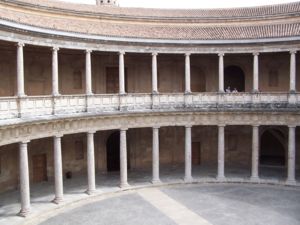 |
